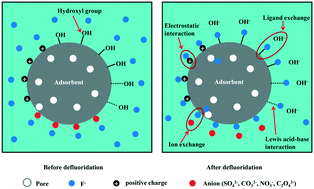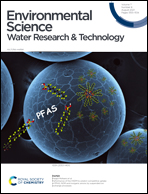A comprehensive review of adsorbents for fluoride removal from water: performance, water quality assessment and mechanism
Abstract
Excessive intake of fluoride can lead to a series of fluorosis-based diseases, and how to remove the excess fluoride from water is an urgent issue worldwide. Among various defluoridation methods, adsorption is a well-studied and widely used technology due to its simple design, convenient operation and low cost. In this review, we comprehensively summarized and evaluated different kinds of defluoridation adsorbents developed in the last decade, including adsorbents derived from natural minerals, industrial wastes and biomass, metal oxide and hydroxide adsorbents, and carbon-based adsorbents. The preparation methods of adsorbents and the strategies to enhance their defluoridation performance are highlighted. It is found that regulating and controlling the crystalline phases, microstructures and active sites and incorporating other materials to form composites are effective methods to enhance the defluoridation performances of adsorbents. The water quality after defluoridation and related influencing factors are discussed in detail. Moreover, the fluoride removal mechanisms of different adsorbents are outlined and analyzed. Based on the review, the advantages and disadvantages of different adsorbents, as well as the prospects and challenges are also discussed.



 Please wait while we load your content...
Please wait while we load your content...